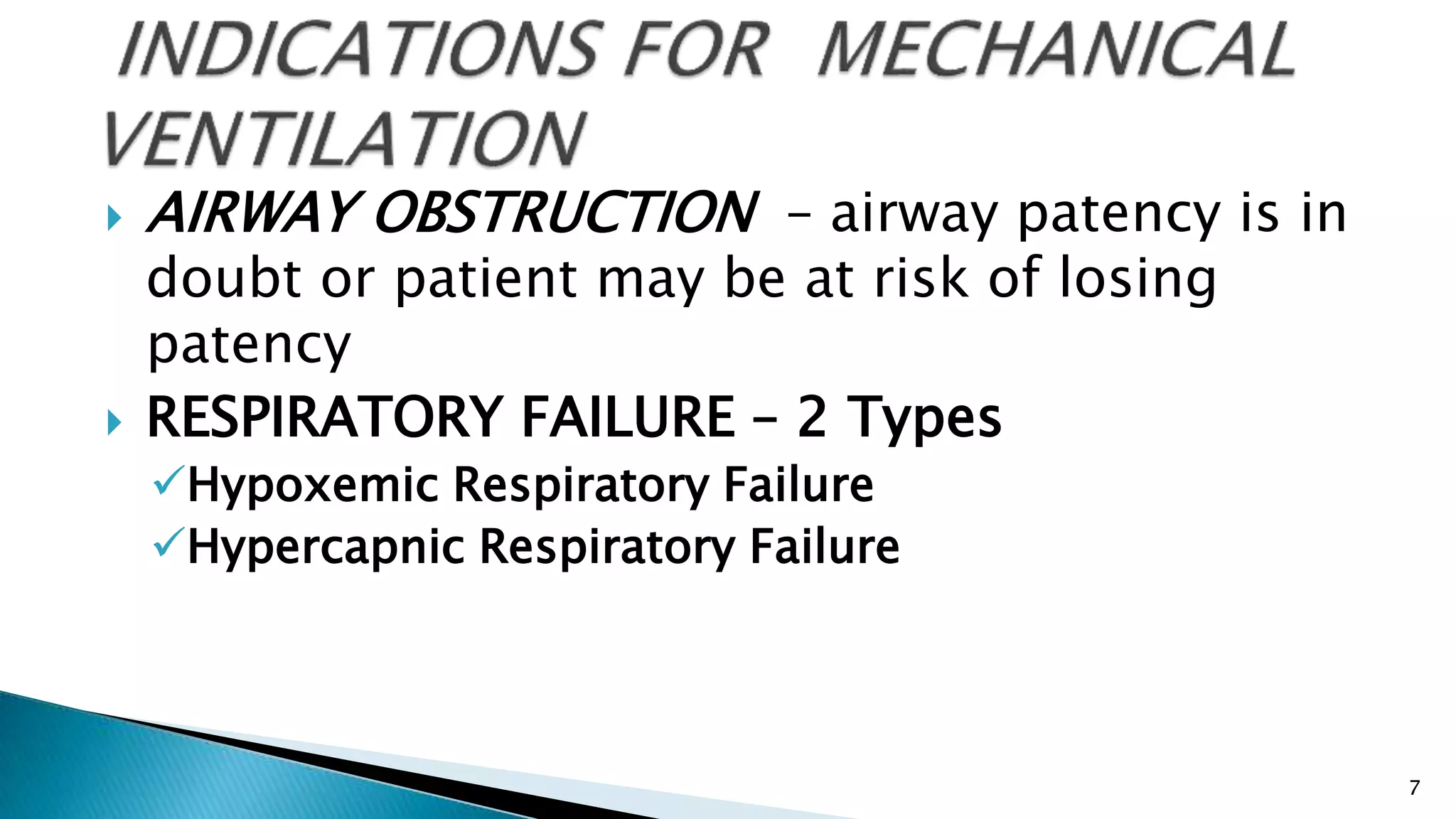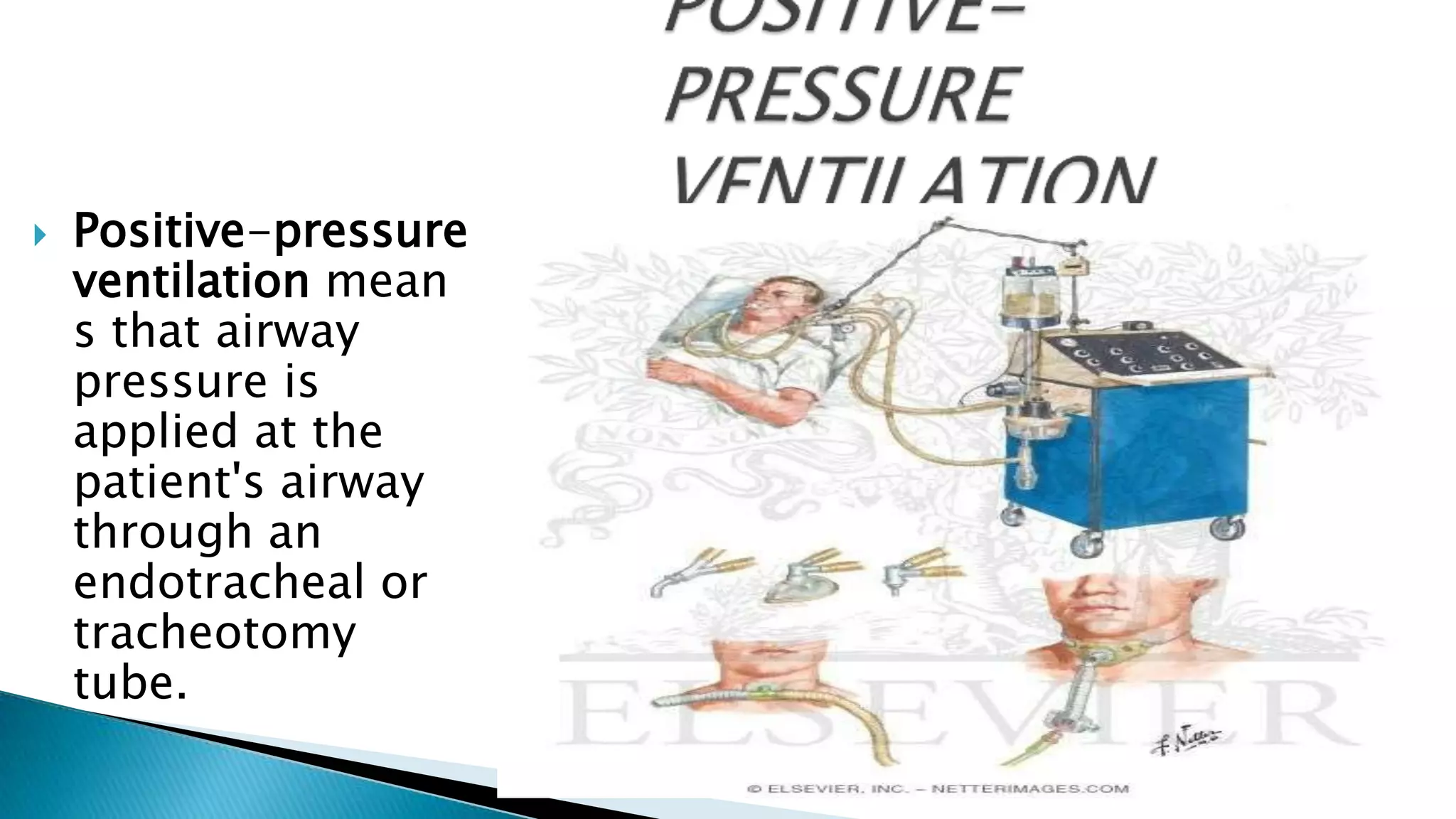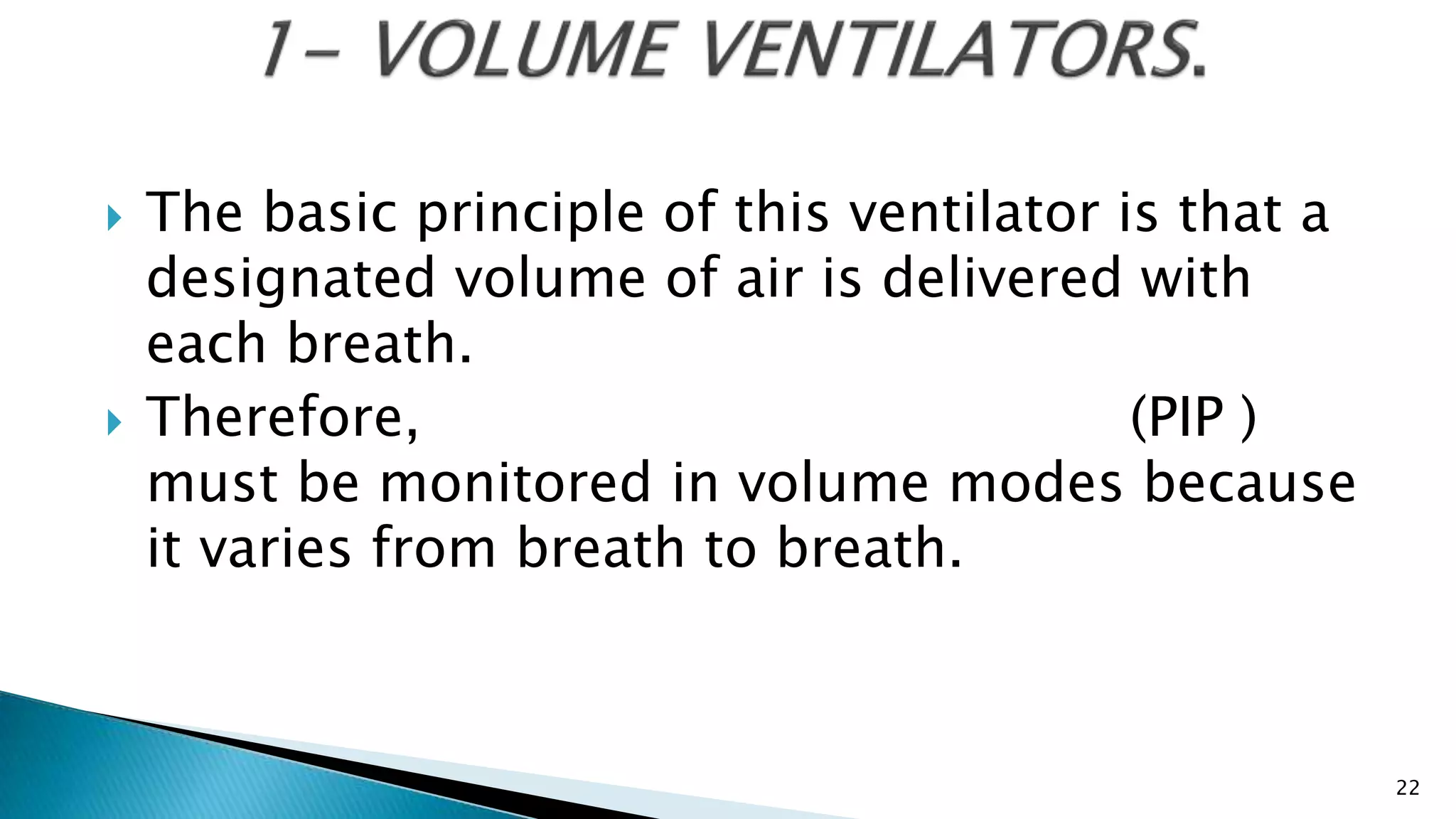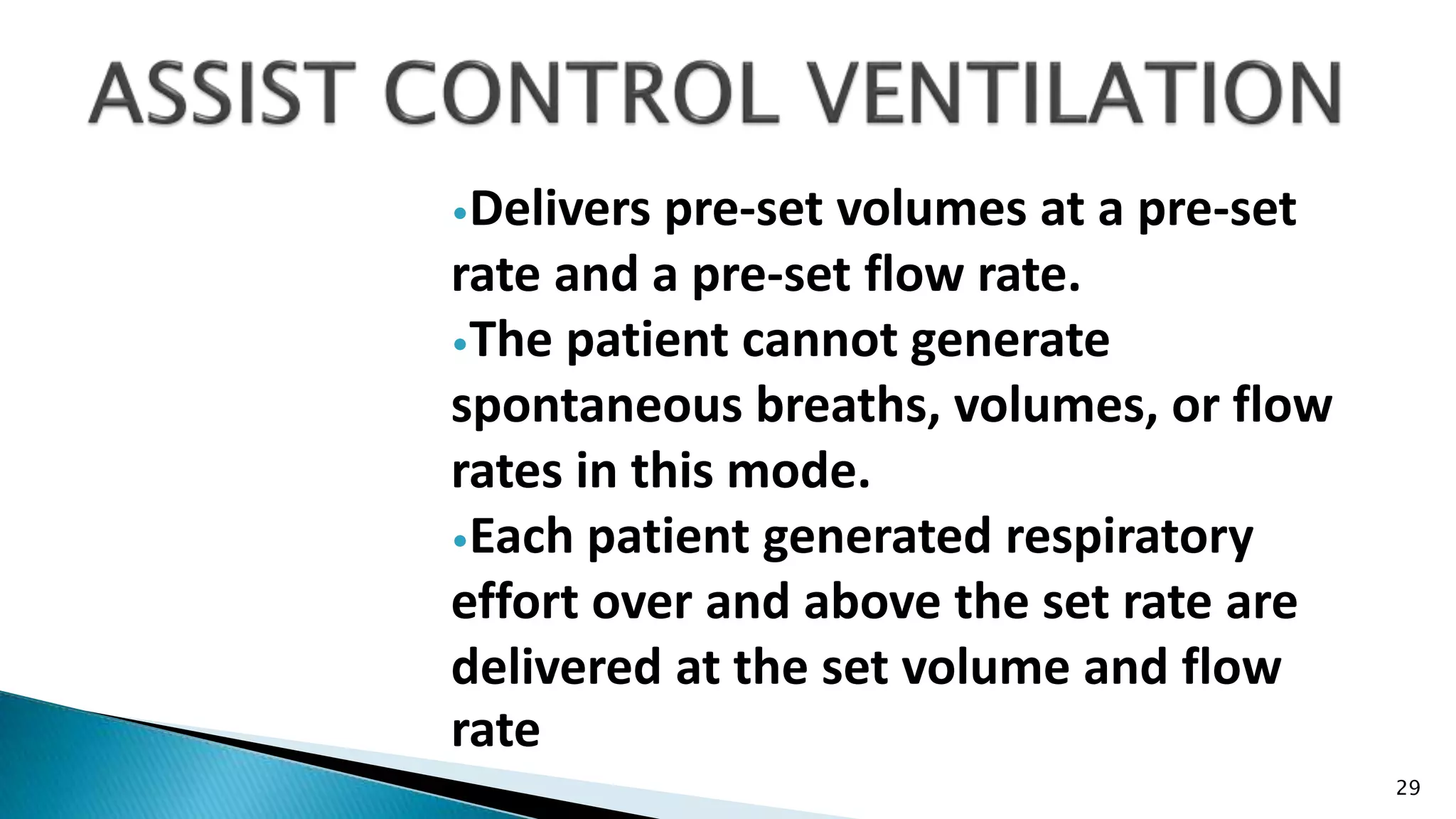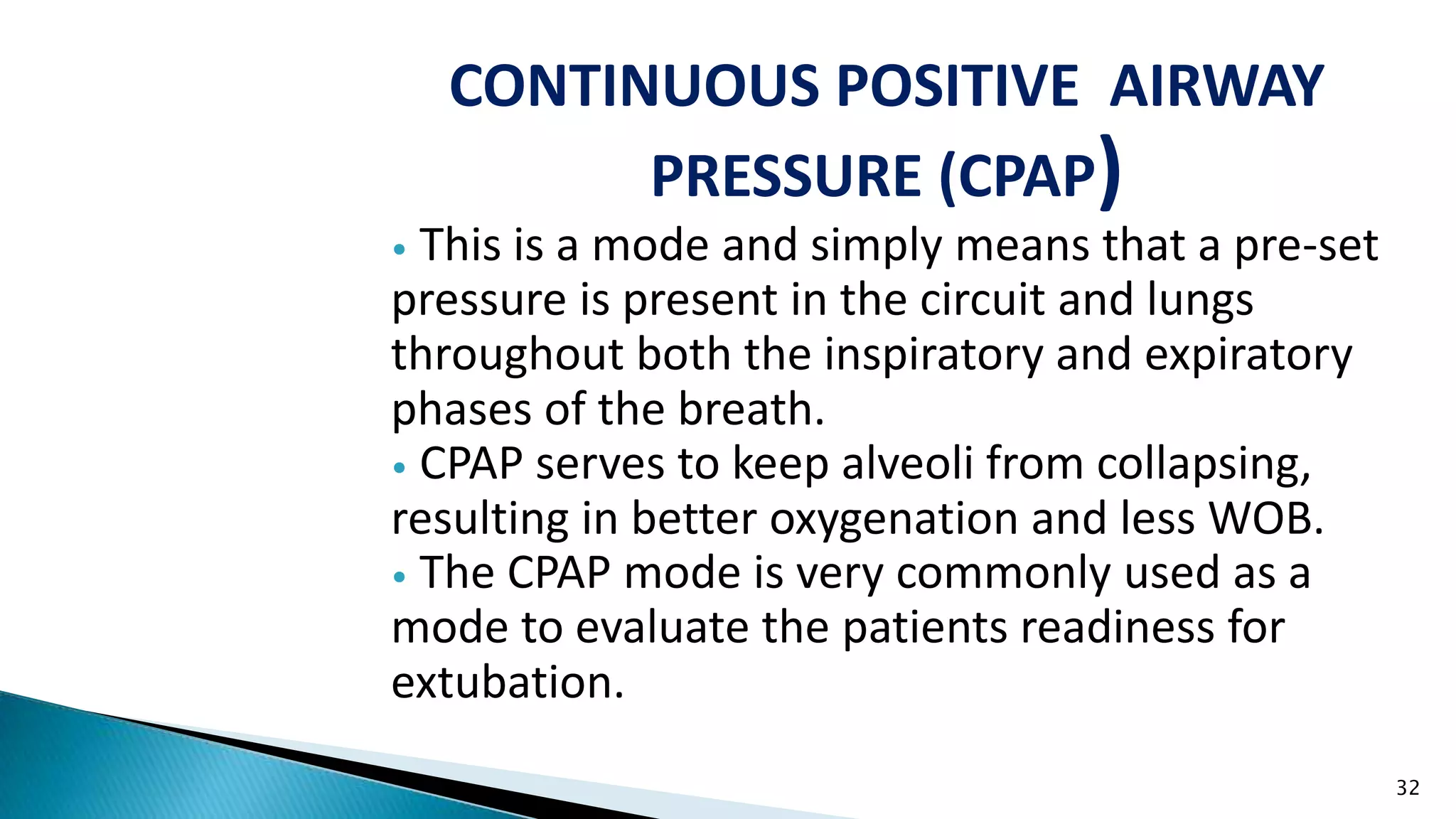Mechanical ventilation is the use of a ventilator to provide breathing support to patients whose breathing is impaired. There are two main types of ventilation: negative pressure ventilation which uses pressure changes around the chest to drive breathing, and positive pressure ventilation which delivers gas into the lungs through an endotracheal tube.
There are several reasons a patient may require mechanical ventilation including airway obstruction, respiratory failure, or to improve oxygen levels and reduce work of breathing. Key settings on a ventilator include tidal volume, respiratory rate, pressure support, and PEEP. Common modes include assist-control, pressure support, and CPAP. It is important to carefully monitor the patient and ventilator, respond to alarms immediately






